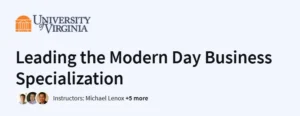What will you learn in this Six Sigma and the Organization (Advanced) Course
Understand the purpose and value of Six Sigma within an organization.
Learn the basic principles of Six Sigma and Lean methodologies.
Apply critical tools and metrics integral to Six Sigma.
Gain knowledge of the roles and responsibilities associated with Six Sigma and Lean.
Program Overview
1. Six Sigma and the Organization
⏳ 1 hour
Introduction to Six Sigma’s interaction with organizational structures, lean principles, and project management basics.
2. Lean Principles in the Organization
⏳ 2 hours
Exploration of lean concepts, the five lean principles, and quality tools used in lean.
3. Design for Six Sigma (DFSS) Methodologies
⏳ 2 hours
Understanding DFSS methodologies and their application in process improvement.
4. Business Process Management and Metrics
⏳ 2 hours
Learning about business process management, key performance indicators, and metrics for process evaluation.
5. Project Management Basics
⏳ 2 hours
Introduction to project management principles, including project charters and stakeholder analysis.
Get certificate
Job Outlook
Prepares learners for roles such as Quality Analyst, Process Improvement Specialist, and Six Sigma Consultant.
Applicable in industries like manufacturing, healthcare, finance, and logistics.
Enhances employability by providing practical skills in quality management and process improvement.
Supports career advancement in fields requiring expertise in Six Sigma and Lean methodologies.
Specification: Six Sigma and the Organization (Advanced)
|
FAQs
- Prior certification is not mandatory, but basic knowledge of quality management helps.
- The course builds on foundational concepts, so familiarity with Six Sigma basics is beneficial.
- Learners with process improvement experience will adapt more easily.
- Newcomers may need to review introductory Six Sigma materials first.
- The course is designed to be accessible but assumes some prior exposure.
- Focuses on organizational application rather than just technical tools.
- Provides a mix of Lean principles, project management, and Six Sigma integration.
- Less certification-driven, more skill and career application oriented.
- Shorter duration compared to full Green/Black Belt programs.
- Ideal as a supplement or stepping stone toward belt-level certifications.
- Applicable to healthcare for reducing errors and improving patient flow.
- Useful in finance for streamlining operations and compliance processes.
- Helps IT teams enhance service delivery and reduce defects.
- Supports logistics and supply chain optimization.
- Broadly adaptable to any process-driven industry.
- Provides recognized certification of completion.
- Enhances credibility in process improvement roles.
- Opens pathways to positions like Quality Analyst or Process Consultant.
- Builds cross-industry relevance, not limited to manufacturing.
- Strengthens leadership and project management skills alongside Six Sigma.
- Includes hands-on exercises and case studies.
- Encourages application of Six Sigma tools on real-world examples.
- Assignments simulate organizational challenges.
- Learners can practice applying Lean principles to varied scenarios.
- Balances theoretical understanding with workplace-ready skills.





